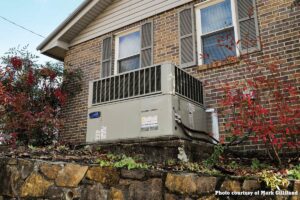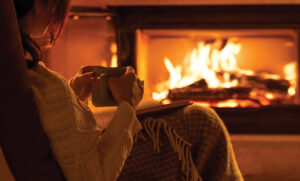
In the past articles I have mentioned that your home’s building shell is made of thermal and pressure boundaries. These boundaries are both located between the conditioned space we intentionally heat and cool and the outside unconditioned space.
Defining what is a conditioned and unconditioned space can fool many people in the home building and remodeling industry. For example, let’s take a look at a crawlspace, is it a conditioned or unconditioned space?
I can tell you from first-hand experience that the crawlspace usually gets ignored! No insulation on the walls or on the bottom of the floor, the ducts are not sealed or insulated and then we even blow heated air into the crawlspace in the winter in a feeble attempt to keep the floors warm in the winter! STOP THE INSANITY! We’ll talk about crawlspaces more in a future article.
Anyway, insulation was designed to slow the heat loss in the winter and reduce the heat gain in the summer, allowing us to have reasonable year round utility bills. I am here to tell you that not all insulation performs the same.
Wall Cavity Insulation
Wall insulation can be divided into two different types: air permeable and air impermeable. An air permeable system would be fiberglass batts.
Air permeable insulation allows air to flow through it while the air impermeable insulation will not. Air impermeable insulation systems would be two-part spray foam, rigid foam board, dense-pack cellulose and even the spray applied cellulose. Air permeable wall cavity insulation performance relies 100 percent on the cavity to be sealed air tight for it to maintain its R-value. If there are air leaks and insulation voids, these imperfections allow movement within the cavity and the insulation R-value will be greatly reduced.
This is why the insulation systems that are air impermeable perform great. Simply put, they perform because air is not flowing through the insulation thus allowing the insulation to perform as it should.
Dr. Joseph Lstiburek is a licensed Professional Engineer in Canada and principal of Building Science Corporation. He initiated a five-year study as a fact-finding mission called the “Thermal Metric Project” testing the thermal performance of a wide variety of building materials and systems.
After five years of continued testing of wall cavity insulation the study concluded that walls that are constructed with the same installed R-value in the stud space, and are air sealed both inside and outside (creating effectively zero air leakage through the assembly), exhibit essentially the same thermal performance regardless of the type of insulation material used.
Dr. Lstiburek came to the conclusion that if you are going to insulate your walls with fiber-glass batts, seal all joints, seams and holes before installing the insulation and make sure the cavity is completely full with no voids. You know, common sense stuff.
Attic Floor Insulation
If you have learned anything from this article so far, you know that air flowing through insulation is bad. Before insulation is blown over the attic floor make sure all sources of air leakage have been sealed airtight. Most air leakage in a home is to the attic. The best performing insulation you can install in your attic is cellulose. Cellulose is ground-up, recycled paper products treated with boron to make it fire retardant. Another benefit is insects don’t like it.
Blown-in fiberglass is another story. The snow-white insulation called “Insul-Safe” is by far the most underperforming insulation on the market today and unfortunately the most common insulation installed in homes. It is the most common because it fluffs so easily and the last time

I checked air is free. This fluffy insulation allows the heat from below to flow up through the generous air spaces in the insulation and then draws down the cooler attic air into the insulation where it is warmed and rises up out of the insulation creating a convective loop. This same thing happens with the pink fiberglass in the attic.
Fiberglass batts do not perform well in an attic either. They are normally not in full contact with the drywall ceiling creating voids.
I recommend the batts be removed, seal the attic floor and blow in R50 cellulose. Homeowners I work with say the home is much warmer and quieter!









